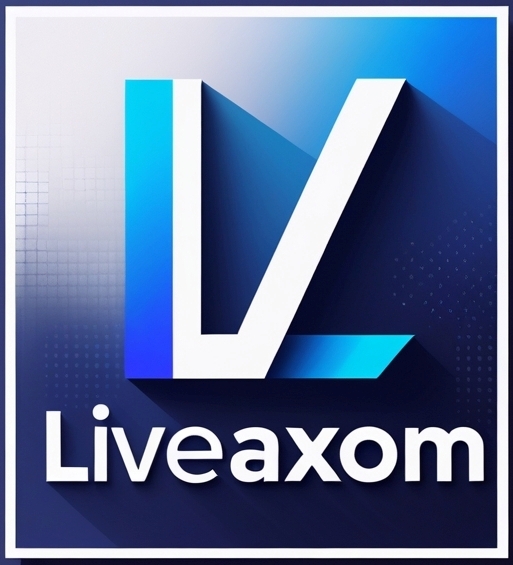Ethereum 2.0, often referred to as Eth2 or Serenity, is the next major version of the Ethereum blockchain. It’s designed to address the scalability challenges of the original Ethereum network, making it faster, more secure, and more sustainable. As of June 2025, several key updates have been implemented, bringing us closer to the full realization of Ethereum 2.0’s vision. This article explores the latest developments, including the Pectra Upgrade, the Ethereum Foundation’s restructuring, and ongoing efforts to enhance scalability.
Pectra Upgrade: A Major Milestone
On May 7, 2025, Ethereum implemented the Pectra Upgrade, a pivotal step in its roadmap toward improved scalability and user experience. This upgrade combines the Prague (execution layer) and Electra (consensus layer) upgrades, delivering several enhancements to the network. Below is a summary of the key features introduced:
| Feature | Description |
|---|---|
| Increased Staking Limits | EIP-7251 raised the staking limit per validator node from 32 ETH to 2,048 ETH, reducing operational overhead and enabling more efficient staking. |
| Account Abstraction | EIP-3074 and EIP-4337-related improvements allow more flexible account management, such as using smart contract wallets without managing private keys. |
| Enhanced Layer 2 Support | EIP-4844 (proto-danksharding) expands capacity for rollup data, improving scalability for Layer 2 solutions to handle higher transaction volumes. |
| User Experience Improvements | Various UX enhancements and maintenance fixes make interacting with Ethereum smoother and more accessible. |
The Pectra Upgrade builds on earlier milestones, such as the Merge in 2022, which transitioned Ethereum to Proof of Stake, and the Shanghai Upgrade in 2023, which enabled withdrawals of staked ETH (Ethereum Roadmap). Despite some testnet challenges during its development, as noted in Decrypt’s coverage, the Pectra Upgrade has been successfully rolled out, marking a significant achievement for Ethereum 2.0.
Ethereum Foundation’s New “Protocol” Division
To accelerate development, the Ethereum Foundation recently restructured its research and development division under the “Protocol” brand, as announced in an X post. This initiative focuses on three key areas to enhance Ethereum’s performance:
- Scaling Layer 1: Led by Tim Beiko and Ansgar Dietrichs, this team works to improve the base layer of Ethereum, enabling it to process more transactions efficiently. This is critical for reducing network congestion and maintaining low fees.
- Scaling Blobs: Alex Stokes and Francesco D’Amato are enhancing blob transactions, which are vital for Layer 2 scaling solutions. Blobs allow more data to be stored off-chain while remaining accessible to the mainnet (What Are Blobs).
- Scaling User Experience: Barnabé Monnot and Josh Rudolf are focused on making Ethereum more user-friendly, with initiatives like interoperable address standards to simplify interactions with decentralized applications (UX Overhaul).
Dankrad Feist, known for his work on Danksharding, serves as a strategic advisor, guiding these efforts. This restructuring reflects the Foundation’s commitment to addressing Ethereum’s scalability challenges and ensuring its long-term sustainability, as highlighted in Decrypt’s report.
Ongoing Scaling Efforts: EIP-7623 and Gas Limit Increase
A recent development in Ethereum 2.0 is the implementation of EIP-7623, which enables 153,000 validators to support a 60M gas limit on the mainnet. Testing on the Sepolia and Hoodi testnets, as noted in an X post, indicates that this increased gas limit is safe for propagation. However, further analysis is needed before full mainnet adoption.
The gas limit increase is a crucial step for Ethereum’s scalability, as it allows more transactions to be processed per block, reducing congestion and lowering fees. This development aligns with Ethereum’s broader goal of handling higher transaction volumes efficiently, making it more competitive in the blockchain space.
Looking Ahead: What’s Next for Ethereum 2.0?
While the Pectra Upgrade and the Foundation’s restructuring are significant milestones, Ethereum’s journey continues. The community is anticipating several future developments:
- Danksharding: A cornerstone of Ethereum 2.0, Danksharding will shard the blockchain, enabling parallel transaction processing to significantly boost capacity (Ethereum Improvement Proposals).
- Further Layer 2 Enhancements: Continued improvements to Layer 2 solutions will ensure Ethereum can handle the growing demand for decentralized applications (dApps), as discussed in CoolWallet’s blog.
- User Adoption: Efforts to make Ethereum more accessible to mainstream users, such as improved wallets and interfaces, will drive broader adoption.
These advancements position Ethereum to maintain its leadership in the blockchain space, alongside other cryptocurrencies like those highlighted in Top 5 Cryptocurrencies to Watch.
The Future Roadmap: Sharding and Other Developments
The Ethereum development roadmap continues post-Merge with several key phases designed to enhance scalability, security, and sustainability. The most anticipated is “The Surge,” which will introduce shard chains.
Shard Chains (The Surge)
Sharding aims to horizontally scale the Ethereum network by splitting the database across 64 new chains (shards). This will distribute the load of data processing, theoretically enabling the network to process many more transactions per second and subsequently reducing gas fees. This represents a significant engineering challenge and is a focal point for top-ai-news-2025 which often covers groundbreaking tech.
Further planned upgrades include:
- The Verge: Implementing Verkle trees to optimize data storage and help with node size.
- The Purge: Reducing the historical data storage requirements for validators, further decreasing network congestion.
- The Splurge: Miscellaneous smaller improvements to refine the network.
Proof-of-Work (PoW) vs. Proof-of-Stake (PoS)
| Feature | Proof-of-Work (PoW) | Proof-of-Stake (PoS) – Post-Merge Ethereum |
|---|---|---|
| Consensus | Miners solve complex puzzles | Validators stake ETH to propose blocks |
| Energy Use | High | Low (approx. 99.95% less) |
| Hardware | Specialized mining hardware (ASICs, GPUs) | Standard computer hardware |
| Attack Cost | Based on acquiring majority hash power | Based on acquiring majority staked ETH |
| Participation | Requires mining infrastructure | Requires staking ETH (e.g., 32 ETH or pools) |
| Issuance | New ETH created as mining rewards | New ETH issued as staking rewards |
The transition via The Merge represents a substantial evolution for Ethereum, setting a new course for its development and role within the broader digital asset ecosystem. Keeping abreast of developments, like those covered in ai-news-today, is beneficial for understanding the rapidly changing tech landscape.
Conclusion
The latest Ethereum 2.0 updates as of June 2025 demonstrate the project’s commitment to scalability, security, and usability. The Pectra Upgrade has introduced critical features, the Ethereum Foundation’s restructuring is driving focused development, and ongoing efforts like EIP-7623 are paving the way for a more efficient network. As Ethereum continues to evolve, staying informed about these changes is essential for developers, investors, and enthusiasts. For more insights into the crypto world, check out Major Crypto Exchange Security Breach or explore AI News Today for related tech developments.

